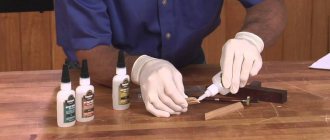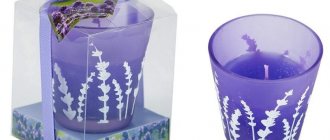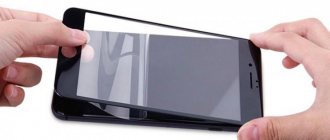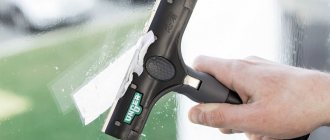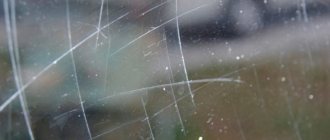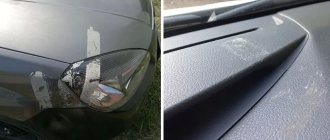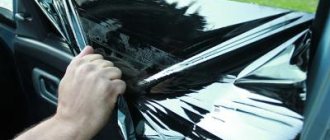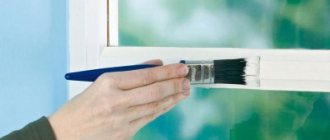Looking at yourself in a store window, washing your face and looking in the mirror in the morning, watching the strange mixing of coffee with milk through the transparent walls of a cup are common activities. And no one thinks about the path that glass takes to become an integral attribute of the life of a modern person. It all starts with mixing unusual ingredients.
Glass production technology begins with the preparation and mixing of the constituent parts. The quality of glass products depends on the degree of preparation of the ingredients.
Glass substrate sorting
Before glass is made, the sand is sifted and sorted. Raw materials of poorer quality are used for the production of window glass, while the best are used for the manufacture of tableware, jewelry, optical lenses and artistic products. The difference in the size of the grains and the chemical composition affects it: the finer the sand, the wider the scope of its application. If large grains of sand predominate, then such sand is the main raw material for window glass.
Purposes of matting
Frosting of glass is rarely done, but most often this happens when:
This is typically done for door inserts, windows, and shower screens.
They want to get rid of transparency.- Add originality to old products. This is usually done on furniture mirrors, lamps, dishes and other products.
If you are interested in how to make ordinary glass frosted with your own hands, you are unlikely to want to resort to expensive services. In our article you will find several proven methods that will help you do this inexpensively and with your own hands.
Manufacturing equipment
The glass production process is, of course, lengthy, but nowadays most operations are automated. The equipment is varied and expensive.
Main equipment of glass factories:
- vehicles for transporting sand from quarries to conveyors;
- conveyor belts for moving raw materials to sorting areas;
- sand washing drums;
- sorting devices;
- filtering installations;
- installations for mixing components;
- glass melting furnaces;
- leveling baths or devices for drawing sheets of glass;
- conveyors equipped with rollers for moving glass around the workshop;
- automated device with diamond for cutting sheets;
- pneumatic gripping devices.
Making a glass oven door with your own hands, tools and materials
To work with such a specific material as heat-resistant glass, it is recommended to use the traditional scheme for creating a metal frame.
To work you will need the following tools:
- Welding machine;
- Hammer;
- Vices and bench clamps;
- Metal brush;
- Bulgarian;
- Locksmith corner;
- Roulette, marker;
- Bulgarian;
- Gloves, protective mask;
The following materials will be used in the work:
- Steel corner 25x25 mm;
- Corner 15x15 mm or 20x20 mm;
- Mineral wool 2-3 mm thick;
- Metal drills;
- Miniature garage curtains;
- Shutter or locking device;
- Taps;
- Cleaning and cutting discs;
In addition, ready-made or assembled forged elements can be used for decoration.
The main method of connecting parts will be electric welding.
Glass at home
Craftsmen can make glass even at home. First you need to calculate the proportions of the components. Having studied what glass is made from, the composition of the future glass mixture includes: sand, soda, lime, broken glass.
The procedure for making glass at home:
- Preparation of main components. You need to heat 180 grams of baking soda over a fire until the moisture evaporates. Heat 400 grams of sifted, washed sand over a fire and dry. Grind 80 grams of lime. Pour into one bowl. Add 10 grams of boric acid and two table salts.
- To make glass yourself, you need to prepare a container. To maintain integrity in high heat, it is advisable to coat metal dishes with a mixture of liquid glass and clay in several layers. To do this, mix a few tablespoons of modeling clay with water until liquid. Then add one or two tablespoons of liquid glass. Using a brush, coat the dishes.
- Heat the coated vessel with gas. Its surface will be covered with convex “pimples”.
- Prepare broken glass: sift the broken dishes. Place three tablespoons of small glass particles in a cooking vessel. Add the rest of the raw materials.
- Place the resulting mixture on the fire. You can blow it with a forge. After three to four hours, the mixture will melt to a liquid glass consistency.
Recommendations for glassmaking
Finally, we offer you a few more tips on making glass at home:
- Beach sand can be used instead of special quartz sand. It should be the whitest, most uniform and thin. However, the quality of such glass will not always be necessary.
- Coarse sand or additives must be crushed in advance. To do this, use a mortar or crusher.
- Before cooking, you can put pre-crushed pieces of glass in the sand. This way you can recycle them into new glass.
- Be sure to wear a mask before crushing glass.
Quality Standards
There are a huge number of types of glass. To determine the quality of each type, state standards have been created, which describe the properties and quality characteristics.
There are GOST standards for quartz, sheet, medical, multilayer, curved, inorganic, optical and other types of glass. They describe production technologies, brands, methods for determining quality, and classification.
Create a mirror surface
How to make a mirror? First you need to polish our glass by wetting its surface with water.
to prepare the following items in advance :
- glass;
- containers in which the solution will be prepared and mixed with silver;
- latex gloves;
- silver (nitrate) and tin (bichloride);
- distilled water, caustic potassium or soda;
- honey, ammonia and formaldehyde;
- alcohol, cotton wool;
- clear varnish;
- glass rod and nitric acid;
- a spray bottle that will be used to apply the mixture to the glass, plus a brush with soft bristles;
- frame or wooden sheet with clips;
- dye.
We put on rubber gloves and carry out all work exclusively in them.
Next, when you manipulate the glass, hold it carefully by the edges, otherwise you risk staining the smooth surface . This is important because the material will need to be frequently dragged from place to place, washed and various substances applied to it.
The procedure is as follows:
- We wash the glass with distilled water and crushed chalk. All sides must be clean, incl. ends.
- We treat the surface with a degreasing alkali solution (sodium or potassium, containing about 10%).
- Rinse the glass again with distilled water.
- Wipe clean glass with a cotton swab dipped in a 1% solution of stannous chloride. Then immediately place the mirror in a container filled with distilled water. Let it get wet.
- While the glass is poured, clean and degrease (with the same alkaline solution) the container in which you plan to silver the glass. Please note that the surface temperature of the future mirror in water should be 10 degrees higher than that of the solution induced for silvering.
You will need to prepare two solutions containing the contents with which the glass will be coated. Use only distilled water:
- The first solution consists of silver nitrate (1.6 g) and water (30 ml). After mixing them, watch what kind of sediment you get. Drip 25% ammonia into it until it disappears, then add another half cup of water.
- Pour a 40% formaldehyde solution (5g) into the second container with divisions.
Mix both liquids.
Then proceed like this:
- Place the glass horizontally on the surface prepared for silvering.
- Now start covering the glass: pour the resulting solution into the middle, roll it out in an even layer using a glass rod. Or lower the glass into the chemical mixture so that the silver does not fall on the opposite side.
- The solution needs to harden. To “mirror” it needs 3-10 minutes, depending on the initial temperature of the mixture.
- When everything is dry, you need to place the mirror vertically. While the silver layer is not fixed, it may be damaged, so lean the product against the support with the untreated side.
- The mirror needs to dry for 2 hours at temperatures up to 100 degrees.
- Inspect the received product. Silver stains can be wiped off with cotton wool and a solution of nitric acid.
- Rinse the mirror first in water and then in alcohol.
- The silver layer should have cooled by this time. Spray it with clear varnish from a spray bottle.
- When the varnish is dry, paint the darkened surface. Then paint the silvered part with red lead, diluting it in turpentine. The glass part must be wiped with a solution of nitric acid.
- Let everything dry and look at the result. If everything suits you, all that remains is to place the mirror in a frame with clips.
Glass brands
Large manufacturing companies produce a wide range of sheet glass types. This is due to the popular glazing of large office and retail buildings in major cities. Therefore, manufacturers often use GOST No. 111-90 “Sheet glass. Technical conditions".
According to their intended purpose, glass is divided into the following grades:
- M1 - mirror improved. The thickness of the products is no more than 6 mm and no less than 2 mm. Designed for car windshields and high-quality mirrors.
- M2 - mirror. Used for the production of mirrors and glass in public transport.
- M3 - polished technical. They produce decorative furniture elements and mirrors.
- M4 - polished window. Serves for high-quality glazing of translucent, safety glass structures of vehicles.
- M5 - unpolished improved window. Used for glass of agricultural vehicles.
- M6 - unpolished window. Used to create translucent structures.
- M7 - polished display case. Thickness ranges from 6.5 mm to 12 mm. Used in the design of shop windows and stained glass.
- M8 - unpolished display case. Showcases and lanterns are made from it.
Mirror
The easiest way is to decorate mirrors using shards (colored or transparent). This can be done with vases, candlesticks, and trays.
Since the essence of the decoration is gluing pieces of glass, be sure to wear rubber gloves before starting work; they will protect your hands from cuts and allergies to substances contained in the glue.
On the surface of the object you must first apply pattern markings along which the fragments will be laid out. Only ceramic glue is suitable, layers of which must be applied using a special tool - scrapers.
If transparent pieces of glass were used, they can be painted with acrylic paint designed for working on glass.
After the layer with the fragments has dried a little, the holes between them can be sealed with tile putty or mosaic cement. You need to act carefully, but there will still be excess. You can remove them using a damp cloth.
This is what mirror frames made in this style look like.
You can decorate in a similar way:
- frames for photographs, mirrors, paintings;
- flower pots;
- caskets;
- drawers;
- countertops and other items.
Main:
- accurately calculate the number of pieces of glass (prepare paint to finish painting the transparent pieces);
- apply clear markings and indicate where and what layer will need to be laid.
Classification of glass products
Around a person there are a lot of objects made of glass or with its inclusions. They can be summarized by intended use.
Main groups of glass products:
- Household products. Which in turn are divided into household, artistic and decorative, kitchen utensils. Household products are used for canning and storing food. Artistic and decorative - have high aesthetic properties and are used to decorate the interior. Kitchen utensils are made of borosilicate or sital glass, which has fire-resistant properties. Therefore, the assortment is represented by braziers, saucepans, and roasting pans.
- Construction glass - glass used in construction. Production includes glass for windows, shop windows, stained glass, double-glazed windows, glass blocks, and other construction products.
- Technical - glass that has a narrow specialization. Includes medical optical, laboratory glassware, transport glassware, electrical glassware, and car parts.
Photo frame
A more difficult operation will be decorating frames, panels and paintings.
Before making a frame with glass, you will need to prepare:
- a sheet of fiberboard of a suitable size (dimensions are selected based on the intended design);
- broken glass (transparent and colored);
- acrylic paints, gouache or ink;
- glue.
A thick layer of acrylic paint is applied to the fiberboard sheet. If desired, you can cover it with one or more shades . This is necessary to prepare the background. When everything is dry, the sheet needs to be inserted into the frame of the future product.
Then, on the future panel or painting, you need to apply the contours of the planned design using a stencil or by hand.
This is why ink or gouache was needed - to circle the outlined lines twice and glue the fragments along them.
Having pasted them in the background area, you need to let the product dry.
Application of glass
Glass products are used in many areas of human activity. In some, its hardness is important, in others - transparency, quality is valued equally everywhere.
Directions for glass application:
- Optics. The highest priority is given to the transparency of future optical elements. Used in scientific, military, aerospace activities and for the production of consumer optics.
- Clear glass. They are actively used in construction for the construction of lighting structures.
- Colored glass is the basis for creating stained glass and other mosaics.
- Art glass. This type is used to create original decorations and interior elements.
- Glass enamel. This is a durable material with high abrasion resistance. It is actively used for coating ceramic tiles, bathtubs, faience sanitary ware, and galvanic baths.
- Fiberglass, fiberglass. They are used to produce glass wool, fiberglass laminate and other materials.
- Optical fiber. It is used to make special threads for communications, the Internet, and television networks.
- Photochromic glass. This type of glass is used to protect from light. Used in the production of sunglasses and for darkening windows in public transport.
- Dielectric glass is actively used for the production of insulators in the electrical industry.
What is known about glassmaking?
It is known from history that glassmaking is a very ancient process. How it's done? The time frame dates back to approximately the period before 2500 BC. Previously, such a rare and valuable occupation has now been replaced by the widespread production of this material.
Glass products are found everywhere. They are used as containers, household and decorative elements, insulators, reinforcing fiber and other things. Glasses differ only in the constituent material used for manufacturing. But the process itself is almost the same.
Basic materials you will need:
- the main element is quartz sand (silicon dioxide);
- sodium carbonate or soda;
- calcium oxide, also known as lime;
- furnace for melting glass;
- other salts and oxides that can be used additionally on an individual basis (oxides of aluminum, iron, magnesium, lead and calcium or sodium salts);
- protective clothing;
- grill;
- charcoal;
- molds and other elements for giving shape;
- fireproof crucible.
Hardening methods
There are currently only two types of glass tempering in the industry. The first is very rare and requires the chemical replacement of sodium molecules with potassium molecules.
The second is much simpler and more traditional - simple heat treatment. In this case, the glass is heated to a certain temperature, after which it cools. This happens a certain number of times.

